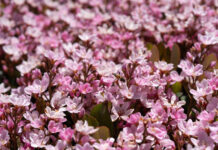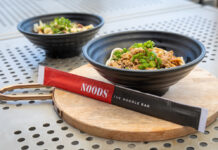
Do-it-yourself (DIY) skincare is a cheap all-natural alternative to purchasing face masks, scrubs, moisturizers and other beauty products. Though numerous online recipes claim to reduce acne, hydrate your skin or even remove cellulite, they don’t always include details on the products’ side effects. Keep reading to find out which everyday user-friendly ingredients might be hiding in your cabinet and which to avoid for your skin type.
Egg white masks
Dry | Combination | Normal | Oily
When used as a face mask, eggs whites can remove excess oil from the face. Once the unbeaten egg white is lathered onto the face, you must leave the egg white mask on until it dries and then simply rinse it off. In testing out this recipe, I found that the egg white was extremely difficult to apply onto my face. It was not only slippery, but also quite sticky. After washing my face, the egg white did succeed in removing oil. However, it took all the moisture from my face with it. It stripped the natural oils from my skin, leaving it uncomfortably tight. I do not recommend this recipe for people with dry, combination or normal skin types. For oily skin, this product might be alright if you apply it as a spot treatment for the T-Zone, chin or nose. In any case, this recipe should not be used during colder seasons when the skin is typically dry.
Gelatin pore strips
Dry | Combination | Normal | Oily
Gelatin pore strips are a cost-friendly substitute to store-bought pore strips if prepared and used correctly. They are made of two simple ingredients: milk and gelatin. Milk is usually found in most peoples’ refrigerators and gelatin can be found in the Jello aisle for two dollars. To make this pore strip, measure a one-to-one ratio of milk and gelatin powder, mix it in a microwave-safe bowl and microwave for 10 seconds. The recipe’s recommendation of using one tablespoon of each made a hefty amount of product. I suggest reducing the measurements to two teaspoons or half a tablespoon unless you plan to share with some friends. The pore strip is meant to be thinly applied while warm and peeled off once dry. If the mixture cools down too much before it is used or is applied too thickly onto the nose area, it will not work effectively. If the strip is too thin, you will have a hard time picking the edge to peel it off. In this case, add another thin layer on top of it. To reheat the mixture, add another teaspoon of milk, mix and microwave it for another 10 seconds. If you add too much milk, add more gelatin. I recommend using a disposable chopstick or popsicle stick to apply this product because it is difficult to wash off. The pore strip worked pretty well on most of my clogged pores, but did not get rid of the stubborn blackheads. It hurts when you remove it near the brim of your nose so be sure to peel with caution. If you have sensitive skin or very low pain tolerance, you might want to avoid this recipe.
Aloe vera mask
Dry | Combination | Normal | Oily
Aloe vera is great for cooling down the skin. If you’re able to get your hands on this plant, take advantage! My family has been using aloe vera as a face mask for years because it was my mom’s holy grail skincare ingredient for sunburns, itchiness, redness, acne and dry skin. To use this plant as a skincare product, slice it open and smear it onto your skin. If you want an extra cooling effect, leave the aloe vera in the refrigerator for a few hours. After 15 minutes, rinse it off with water. Be warned: this product gets everywhere and feels slimy. If you’ve already cut the aloe vera open, be sure to put it in a Ziploc bag to retain its moisture. For those with oily skin, aloe vera feels more sticky on your face, but once you rinse it off, you’ll reap the same benefits as everyone else.
Honey green tea sugar scrub
Dry | Combination | Normal | Oily
Honey has bacteria-fighting and moisturizing properties when applied to the skin. Sugar can be used as an exfoliant. However, do not aggressively scrub your face with sugar or else you will over-exfoliate your skin. Larger sugars such as brown sugar could be better for body scrubs. The other ingredient in this recipe, green tea, is said to have anti-aging properties. I don’t know about that, but it still works as a great exfoliant and feels refreshing on the skin. The Internet has several recipes that combine these three ingredients in different proportions. I recommend catering these ratios to your skin type. Keep in mind that this mixture is made of honey and green tea leaves so it is both sticky and a little prickly. If you have dry or sensitive skin, use more honey than exfoliant. If you have dry skin, you may want to add more sugar to exfoliate dead skin. Once you create your scrub, scoop a marble-sized amount and rub the scrub between the fingers to soften it. Spread it onto your face and leave it on for a few minutes. Then rinse it off with water. Washing this scrub off can get pretty messy so be sure to wipe down the remaining green tea leaves from your sink. After using this honey green tea sugar scrub, my previously oily skin felt softer and looked brighter. I also tested it out as a spot treatment by leaving it on my problem areas for 15 minutes then rinsing it off. Rather than picking at your pimple, apply more pressure on your skin when washing the scrub off your face. I was surprised to see that my whitehead was gone after my test run. To be sure, I did this again on a different pimple and it worked again. Try it out and see if you get the same results!
DIY skincare products are worth the try. Although there is a lot of trial and error involved, you don’t have much to lose. They’re cheap, all-natural and can be personalized to your specific needs. If there are any other beauty or fashion topics you’d like Haute Hax to write about, please send your ideas to features@highlandernews.org.
Tip: Warm water will open your pores, allowing you to get rid of dirt and oil that is trapped inside. Cold water should be used at the end of your skincare routine to seal your clean pores.
Disclaimer: These products were tested by Victoria Nguyen for the use of the Highlander Newspaper. Results may vary depending on the person’s skin type and consistency of using any of these products.








